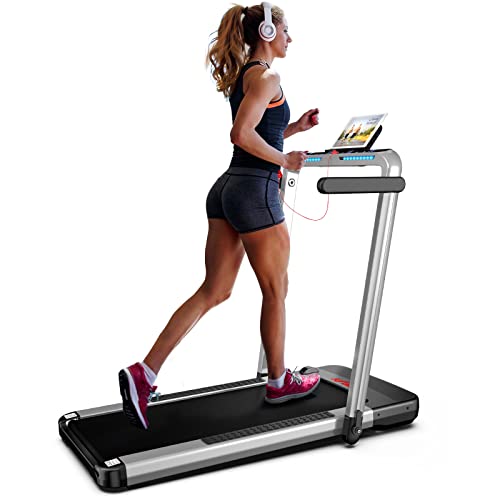What’s The Current Job Market For Tread Mill Professionals Like?
Treadmills: A Comprehensive Guide to Understanding Their Functionality, Benefits, and Appropriate Selection
Introduction
Treadmills have become a staple in contemporary physical fitness regimens, both in homes and gyms worldwide. They provide a convenient and effective way to keep cardiovascular health, boost endurance, and help in weight management. This short article explores the different kinds of treadmills, their benefits, features to think about when purchasing, and some FAQs to guide users in making informed choices.

Kinds of Treadmills
When it concerns selecting a treadmill, it is essential to understand the different types readily available in the market. Here are the main categories:
1. Handbook Treadmills
- System: These treadmills have a simple style and rely on the user’s efforts to move the belt.
- Pros: More economical, quieter operation, no electricity required.
- Cons: Limited features, may not supply the very same variety of exercise strength.
2. Motorized Treadmills
- System: Powered by a motor that drives the belt, permitting users to walk or perform at a set pace.
- Pros: Greater range of speeds and inclines, geared up with various functions such as heart rate screens and exercise programs.
- Cons: More expensive and may require more maintenance.
3. Folding Treadmills
- System: Designed for those with restricted area, these treadmills can be folded for simple storage.
- Pros: Space-saving, often motorized, flexible features.
- Cons: May be less durable than non-folding designs.
4. Business Treadmills
- Mechanism: High-quality machines developed for usage in gyms and physical fitness centers.
- Pros: Built to endure heavy usage, advanced features, often consist of guarantees.
- Cons: Pricey and not perfect for home usage due to size.
5. Curved Treadmills
- Mechanism: A special style that permits users to propel the belt utilizing their own energy.
- Pros: Offers a more natural running experience, promotes much better running form.
- Cons: More costly and can be noisier.
| Treadmill Type | Pros | Cons |
|---|---|---|
| Handbook | Economical, no electrical energy required | Limited features |
| Motorized | Variety of speeds, advanced functions | Maintenance required |
| Folding | Space-saving, often motorized | May do not have resilience |
| Industrial | Built to last, professional-grade features | Costly |
| Curved | Natural running experience, promotes good type | Greater cost |
Benefits of Using Treadmills
Treadmills use various benefits that can add to one’s general health and fitness objectives. Some of these benefits include:
- Convenient Workouts: Treadmills permit users to exercise inside despite climate condition.
- Cardiovascular Health: Regular usage can improve heart health by increasing stamina and promoting healthy flow.
- Weight Management: Effective for burning calories, which helps in weight-loss and management.
- Personalized Workouts: Users can manage speed, incline, and period to develop personalized workout experiences.
- Security: Treadmills supply a foreseeable surface, lowering the threat of falls compared to outdoor running.
- Multifunctional: Many treadmills included features like heart rate screens, workout programs, and even entertainment systems.
Selecting the Right Treadmill
When selecting a treadmill, possible buyers should consider numerous essential aspects:
Features to Consider:
- Motor Power: Tread Mill Typically measured in horse power (HP), a motor strength of a minimum of 2.5 HP is recommended for severe runners.
- Belt Size: A longer and larger belt accommodates different stride lengths, supplying comfort during workouts.
- Incline Settings: Adjustable slope features imitate outdoor hill running and can increase workout strength.
- Weight Capacity: Ensure the treadmill can support the user’s weight for security and longevity.
- Console Features: Look for easy to use dashboards, workout programs, and Bluetooth compatibility for streaming music or other functions.
Spending plan Considerations
- Under ₤ 500: Entry-level manual treadmills appropriate for casual walkers.
- ₤ 500 – ₤ 1,500: Mid-range motorized treadmills that provide more features and much better sturdiness.
- ₤ 1,500 – ₤ 3,000: High-end designs with advanced technology, larger motors, and longer warranties.
- Over ₤ 3,000: Commercial-grade treadmills ideal for frequent usage in gyms or training facilities.
Frequently Asked Questions (FAQs)
1. How typically should I use a treadmill?
It is recommended to use a treadmill a minimum of 3 to 5 times a week, including different strength levels for best outcomes.
2. Can I lose weight by using a treadmill?
Yes, consistent usage of a treadmill can contribute to weight reduction, specifically when integrated with a balanced diet plan and strength training.
3. What is the best speed to stroll on a treadmill for novices?
A speed of 3 to 4 miles per hour is a suitable range for newbies. It’s necessary to begin sluggish and gradually increase pace as convenience and endurance enhance.
4. Do I require to utilize a treadmill if I currently run outdoors?
Utilizing a treadmill can provide additional advantages, such as controlled environments and differed exercises (incline, intervals) that are not always possible outdoors.
5. How do I maintain my treadmill?
Regular maintenance includes lubing the belt, cleaning up the deck and console, and inspecting the motor for optimum efficiency.
Treadmills are necessary tools for those seeking to enhance their fitness levels in a regulated and hassle-free way. With numerous types available, comprehending their functions and benefits is vital for making an informed purchase. By considering individual exercise requirements, area schedule, and spending plan restrictions, individuals can find the most appropriate treadmill that fits their lifestyle. Incorporating treadmill exercises into a well balanced fitness regimen can cause improved health results and a satisfying exercise experience.


